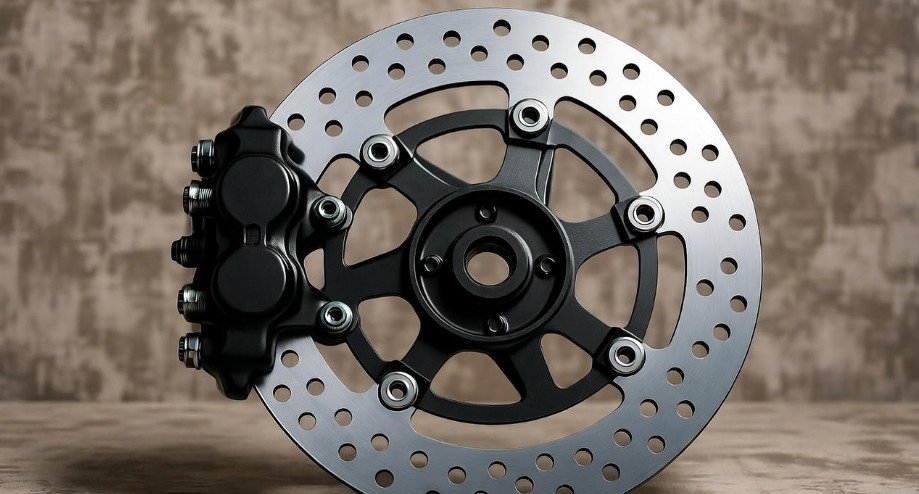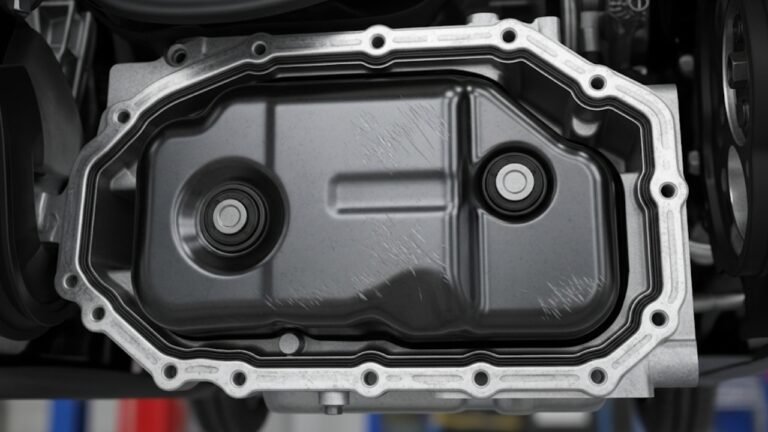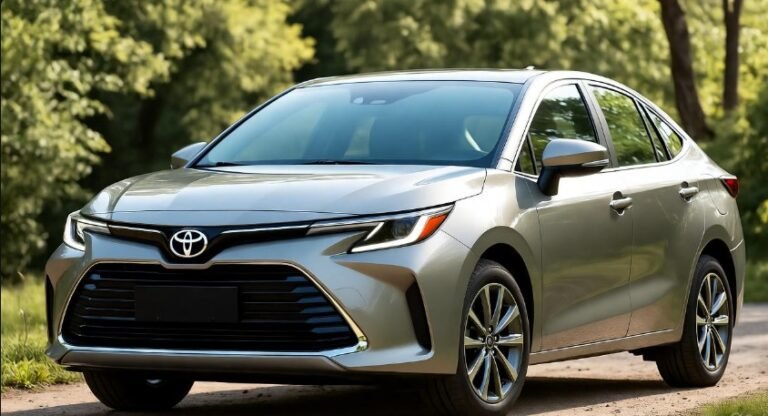Pulsar 220 Disc Brake Kit Price

The Pulsar 220 disc brake kit price can range significantly, from around $50 to over $200, depending on the brand, quality, and whether you’re buying a complete kit or individual components. Getting the right price for your upgrade is achievable with a little research into reputable suppliers.
Key Takeaways
- Compare prices from authorized dealers and online retailers.
- Factor in brand reputation for quality and durability.
- Consider if you need a full kit or individual parts.
- Check for compatibility with your specific Pulsar 220 model.
- Account for installation costs if not doing it yourself.
Are you looking to upgrade your ride’s stopping power? Enhancing your Bajaj Pulsar 220 with a disc brake kit is a popular choice for many riders. But before you head to the shop or click “add to cart,” you’re likely wondering about the Pulsar 220 disc brake kit price. This can be a bit of a maze, with costs varying based on several factors. Don’t worry, we’re here to make it clear. We’ll break down what influences the cost and help you find a great deal for your motorcycle. Let’s get your Pulsar 220 stopping as confidently as it accelerates.
Understanding Pulsar 220 Disc Brake System Basics
Your motorcycle’s braking system is its most critical safety feature. For the Pulsar 220, a disc brake system offers superior performance compared to drum brakes, especially under demanding conditions. A disc brake system typically consists of a rotor (the disc), a caliper, brake pads, and a hydraulic system (master cylinder, brake lines, and fluid). When you engage the brake lever, hydraulic pressure forces the brake pads to clamp onto the rotor, creating friction that slows the wheel.
The Pulsar 220, in its various iterations, might come with different braking setups from the factory. Some models might already feature a front disc brake, while others might have a drum brake at the rear or even both. Upgrading to a full disc brake setup, or replacing worn disc components, involves understanding these parts and their function. This knowledge helps you make informed decisions about what parts you need and what you’re paying for.
Front vs. Rear Disc Brake Kits
When discussing a “Pulsar 220 disc brake kit,” it’s essential to distinguish between front and rear systems, as their prices and complexity can differ. Most motorcycles come standard with a front disc brake due to its significant contribution to stopping power. The rear brake often uses a drum brake or a smaller disc.
- Front Disc Brake Kit: This is the most common upgrade. It usually includes a larger rotor, a caliper, brake pads, and sometimes a new master cylinder and brake line if you’re converting from a drum setup. The Pulsar 220 front disc brake kit price will reflect these components.
- Rear Disc Brake Kit: For riders seeking complete disc brake performance, a rear disc brake kit is available. This typically involves a smaller rotor that mounts to the rear wheel hub, a caliper, brake pads, and the necessary bracketry. Retrofitting a rear disc brake can be more involved and thus potentially more expensive.
The availability of complete kits designed specifically for the Pulsar 220 simplifies the process. These kits often ensure perfect fitment and include all necessary hardware for installation. However, if you’re only replacing worn parts, you might be looking at the price of individual components like brake pads or a new rotor.
Factors Affecting Pulsar 220 Disc Brake Kit Price
The price you’ll pay for a Pulsar 220 disc brake kit isn’t static. Several key factors influence the final cost:
- Brand and Manufacturer: Just like with any automotive part, well-known and reputable brands often command higher prices due to their perceived quality, durability, and research and development. Generic or unbranded parts might be cheaper but could compromise performance and longevity.
- Quality of Materials: The materials used in rotors (e.g., stainless steel, high-carbon steel) and brake pads (e.g., organic, semi-metallic, ceramic) significantly impact performance and cost. High-performance or specialized materials will naturally increase the price.
- Completeness of the Kit: Are you buying a full conversion kit that includes everything needed to install a disc brake where there was none before? Or are you purchasing replacement parts for an existing disc brake system? A comprehensive kit will cost more than just a set of brake pads.
- Model Specificity: Kits designed specifically for the Pulsar 220 will often be priced differently than universal kits that might require modification for a proper fit. Ensure the kit is listed as compatible with your exact Pulsar 220 variant.
- Retailer and Location: Prices can vary between online stores, local dealerships, and independent repair shops. Geographic location can also play a role due to shipping costs and regional pricing strategies.
- OEM vs. Aftermarket: Original Equipment Manufacturer (OEM) parts from Bajaj might be more expensive but guarantee perfect fit and compatibility. Aftermarket parts offer a wider range of prices and performance options, with some aftermarket brands rivaling or exceeding OEM quality.
Understanding these elements will help you navigate pricing and find the best value for your needs and budget.
Typical Price Ranges for Pulsar 220 Disc Brake Kits
Let’s get down to the numbers. While exact prices fluctuate, here’s a general idea of what you might expect for a Pulsar 220 disc brake kit:
Entry-Level/Basic Replacement Parts:
- Brake Pads: For a single caliper (front or rear), expect to pay anywhere from $10 to $30 for a set of pads. These are usually good quality organic or semi-metallic pads.
- Brake Rotor: A replacement disc rotor might range from $30 to $80, depending on the brand and material.
Mid-Range Complete Kits (e.g., Front Disc Conversion):
- If your Pulsar 220 has a drum brake up front and you’re converting to a disc, a basic conversion kit including a rotor, caliper, master cylinder, and necessary mounting hardware could cost between $50 and $150. This is often from lesser-known aftermarket brands.
High-Quality Aftermarket Kits:
- For branded, high-performance front or rear disc brake kits designed for the Pulsar 220, you might be looking at prices ranging from $100 to $250. These kits often feature better quality materials, improved designs, and are built for enhanced stopping power and longevity.
OEM Parts:
- Genuine Bajaj parts, if available as a kit or individual components for an upgrade, could be at the higher end of the spectrum, potentially exceeding $200 for a complete front disc setup.
These figures are approximate and can change based on market conditions, sales, and the specific retailer. It’s always wise to shop around.
Example Price Comparison Table
To illustrate the price differences, consider this example table of potential costs for common disc brake components for a Pulsar 220:
| Component/Kit Type | Estimated Price Range (USD) | Notes |
|---|---|---|
| Front Disc Brake Pads (Set) | $10 – $35 | Organic, Semi-Metallic |
| Rear Disc Brake Pads (Set) | $10 – $30 | Organic, Semi-Metallic |
| Replacement Front Brake Rotor | $30 – $80 | Standard quality, stainless steel |
| Replacement Rear Brake Rotor | $25 – $70 | Standard quality, stainless steel |
| Basic Front Disc Conversion Kit | $50 – $150 | Includes rotor, caliper, master cylinder; basic quality |
| Premium Aftermarket Front Disc Kit | $100 – $250 | Branded, improved performance, complete hardware |
| Premium Aftermarket Rear Disc Kit | $90 – $220 | Branded, improved response, complete hardware |
Remember, these are estimated costs. Always verify current pricing from your chosen supplier.
Where to Buy Your Pulsar 220 Disc Brake Kit
Finding a reliable source for your Pulsar 220 disc brake kit is crucial. Here are the most common places to look:
Online Retailers
Websites specializing in motorcycle parts are a treasure trove. You can often find a wide selection from various brands at competitive prices. Popular platforms include:
- Amazon: Offers a vast array of aftermarket parts, often with quick shipping options.
- eBay: Another platform with a wide selection, especially for used or specific older parts, but be sure to buy from reputable sellers.
- Dedicated Motorcycle Parts Websites: Many online stores focus solely on motorcycle accessories and parts. Examples might include RevZilla, Motorcycle Superstore (though availability varies by region and brand), or sites specific to Indian motorcycle brands if you are in that region or looking for imported parts.
- Manufacturer Websites: Some performance parts manufacturers sell directly to consumers through their own websites.
Local Motorcycle Dealerships and Shops
Your local Bajaj dealership or an independent motorcycle repair shop can be excellent resources. They often stock OEM parts and can recommend reputable aftermarket brands. While prices might be slightly higher, you benefit from expert advice and potentially faster access to parts.
Pro Tip: Before purchasing online, always read customer reviews for both the product and the seller. Look for clear return policies and warranty information.
Important Considerations When Buying
- Compatibility: Double-check that the kit or parts are specifically listed for your Bajaj Pulsar 220 model and year.
- Reviews: Read reviews about the brand and specific product to gauge performance and reliability.
- Return Policy: Ensure the seller has a fair return policy in case the parts don’t fit or are defective.
- Shipping Costs: Factor in shipping fees, especially if ordering from international sellers.
Installation: DIY vs. Professional
The Pulsar 220 disc brake kit price is only part of the equation. You also need to consider the cost and effort of installation. This can be a DIY project for mechanically inclined individuals, or you might prefer to have a professional handle it.
DIY Installation
Pros:
- Saves money on labor costs.
- Provides a deeper understanding of your motorcycle’s mechanics.
- Flexibility to do the work on your own schedule.
Cons:
- Requires specific tools (e.g., torque wrench, brake bleeding kit, socket set).
- Demands mechanical knowledge and precision. Mistakes can be costly and dangerous.
- Time-consuming, especially if it’s your first time.
If you decide to DIY, ensure you have a service manual for your Pulsar 220 and follow instructions meticulously. Proper brake bleeding is crucial for the system to function correctly. You can find numerous online guides and videos, but remember that YouTube tutorials are not a substitute for professional training or a service manual.
Professional Installation
Pros:
- Expert installation ensures safety and proper function.
- Saves you time and the hassle of learning complex procedures.
- Most shops offer a warranty on their labor.
Cons:
- Adds to the overall cost (labor fees can range from $100 to $300 or more, depending on the complexity and shop rates).
- Requires scheduling an appointment.
Labor costs vary significantly by region and by the specific shop. Always get an estimate beforehand. For safety-critical components like brakes, professional installation is often the most reassuring option, especially for beginners.
Maintaining Your New Disc Brakes
Once you’ve upgraded or replaced your disc brake system, proper maintenance is key to ensuring its long-term performance and your safety. Regular checks are vital, especially when dealing with braking systems. For instance, the National Highway Traffic Safety Administration (NHTSA) emphasizes the importance of regular vehicle inspections, which includes braking systems.
Regular Checks
- Brake Fluid Level: Check the brake fluid reservoir regularly. Low fluid can indicate leaks or worn pads. Top up with the correct type of fluid (refer to your manual).
- Brake Pad Wear: Inspect the brake pads for wear. Most pads have wear indicators, or you can visually check their thickness. Replace them before they reach the minimum thickness to avoid damaging the rotor.
- Rotor Condition: Look for scoring, warping, or excessive wear on the brake rotors.
- Brake Lines: Inspect brake lines for cracks, leaks, or damage.
- Lever Feel: Pay attention to how the brake lever feels. A spongy or soft lever can indicate air in the lines, requiring bleeding.
Brake Fluid Flushes
Brake fluid absorbs moisture over time, which can lower its boiling point and lead to corrosion within the brake system. It’s recommended to flush and replace the brake fluid every one to two years, or as per your motorcycle’s service schedule. This might cost anywhere from $50 to $150 if done by a professional.
Taking good care of your disc brake system will ensure it provides reliable stopping power for many miles to come, making your rides safer and more enjoyable.
Frequently Asked Questions (FAQs)
Q1: What is the average price for a complete Pulsar 220 front disc brake kit?
A1: A complete front disc brake kit for the Pulsar 220 can range from around $50 for basic aftermarket options to over $250 for premium quality kits with better materials and performance.
Q2: Do I need to replace both front and rear brakes if I upgrade to disc brakes?
A2: No, you don’t necessarily need to upgrade both. Most riders upgrade the front first as it provides the most significant stopping power improvement. A rear disc brake is an additional performance enhancement.
Q3: Are aftermarket disc brake kits for the Pulsar 220 reliable?
A3: Many aftermarket kits are very reliable and can offer excellent performance. It’s crucial to choose reputable brands known for quality and read user reviews to ensure you’re getting a dependable product.
Q4: How long does it take to install a disc brake kit on a Pulsar 220?
A4: If you are experienced, a front disc brake installation might take 1-2 hours per wheel. For a professional mechanic, it’s typically a similar timeframe. If you’re converting from a drum brake, it could take a bit longer.
Q5: What is the most important part of a disc brake system?
A5: All components are vital, but the brake pads and rotor are where the friction occurs. However, the hydraulic system (fluid, lines, caliper piston) must be in perfect working order for proper pressure transfer to the pads.
Q6: Can I use a disc brake kit from another motorcycle model on my Pulsar 220?
A6: Generally, it’s not recommended unless the kit is explicitly stated to be compatible. Different motorcycles have different caliper mounting points, rotor sizes, and axle diameters, making universal kits or specific model kits the safest bet.
Q7: How often should I replace my Pulsar 220 brake pads?
A7: Brake pad life varies greatly depending on riding style and conditions. Inspect them every few thousand miles and replace them when they reach about 2mm thickness, or when the wear indicator touches the rotor.
Conclusion
Upgrading your Bajaj Pulsar 220’s braking system with a disc brake kit is a worthwhile investment in safety and performance. The Pulsar 220 disc brake kit price can vary widely, from budget-friendly replacements to more substantial investments in high-performance systems. By understanding the factors influencing cost, exploring reputable retailers, and considering your installation needs, you can find the perfect kit to enhance your riding experience.
Whether you’re a seasoned rider looking for peak performance or a newer owner seeking improved safety, a well-chosen disc brake kit will provide increased confidence and control on every journey. Remember to prioritize quality and proper installation to ensure your brakes serve you well for years to come.




